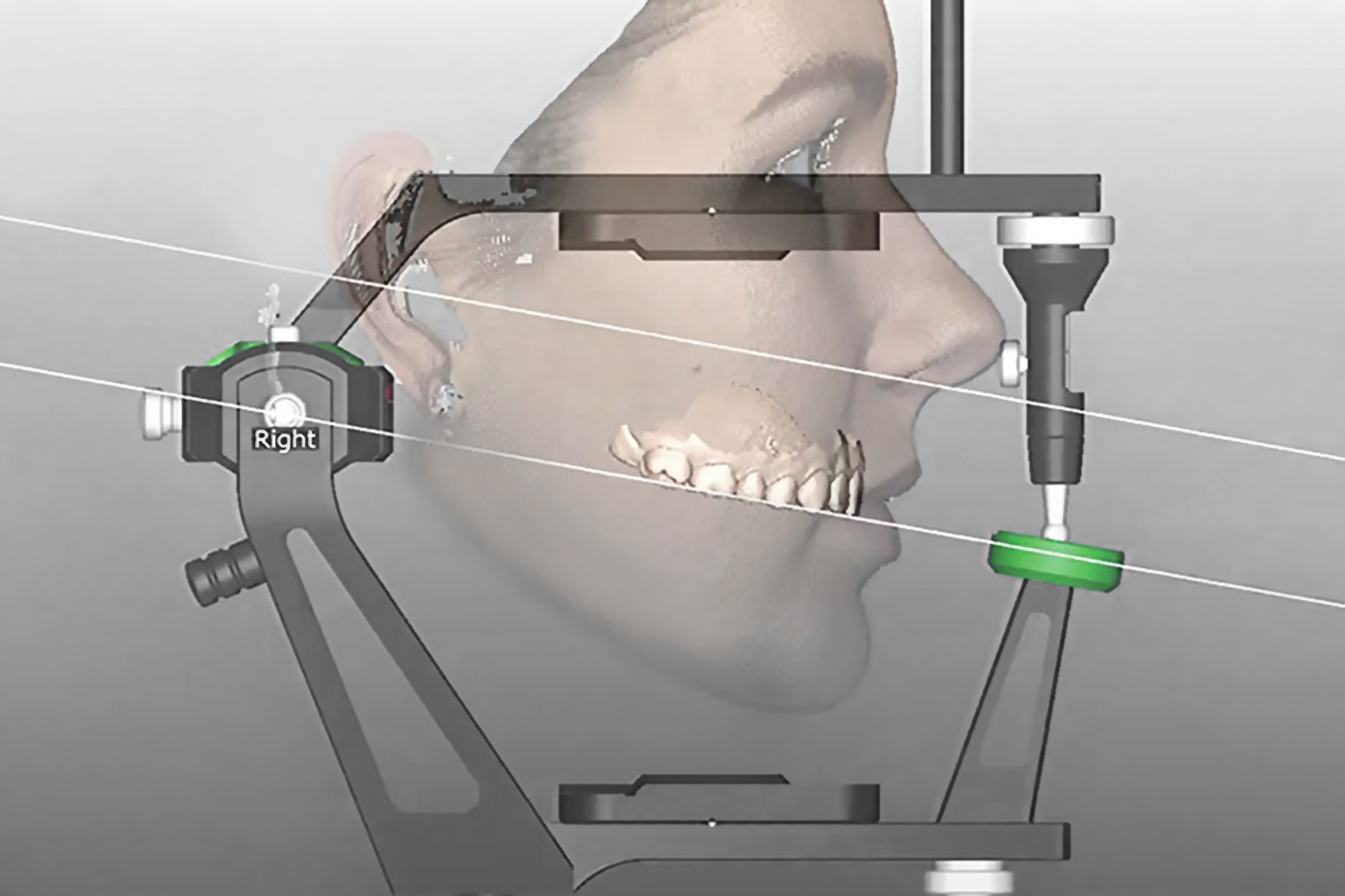
For appropriate digital work distribution, accurate virtual allocation of collected data and coordinates, in tridimensional space with their respective proportions, is an essential condition.
This is possible with the Zirkonzahn automatic light-rays optical scanner and its integrated virtual articulator modeling software. With this scanner, PS1 designed models or other models are measured with the articulator and the data is transmitted, one at a time, to the software’s virtual articulator.
Many articulators are made available with our software, contact us to learn more.
On a daily basis we are confronted to slanted planes, and, from a functional viewpoint, to insufficient dental restorations. Imprecise recording of the patient’s individual information when using the facial arc is one of the reasons. Therefore, Udo Plaster, with the help of the PlaneSystem, has developed a totally new data transmission approach.
With this system, occlusion planes and asymmetries are individually collected for each patient, using the natural head position (NHP) and the Tragus-ala of the nose, which are then transmitted in their true position to the CAO/FAO technology.
This enables you to detect eventual compensations before establishing a therapeutic chart, therefore considerably minimizing or even preventing sources of error, or error transmissions, during a restoration or prosthetic planning. Restoration modeling may now start. Ideally, the patient’s physiognomy should be taken into account at this time. This is possible with Face Hunter, the 3D Zirkonzahn Facial Scanner. The resulting facial digitized data, almost photo realistic, may be used as validation and reference for treatment planning and patient counseling.
Scientific context for the new Udo Plaster Tragus-ala of the nose transmission approach
Scientific studies (by Xie and its collaborators, for example) have identified the connexion line between the ala of the nose’s lower edge and the centre of the Tragus. What is known as the Tragus-ala of the nose is more reliable to pin-point the occlusion line than Camper’s plan or Frankfort’s plan. The Tragus-ala of the nose line varies from one patient to the other with occasional hemi-facial asymmetries. It is necessary to sample the Tragus-ala of the nose independently from the skeletal class to reliably reconstitute the occlusion plane.
Natural head position
The second decisive reference point of Udo Plaster’s transmission System is the Natural Head Position (NHP). The Natural Head Position is connected to a reference frame, independent of the patient, in order to reproduce a patient’s specific facial variations in spatial orientation.